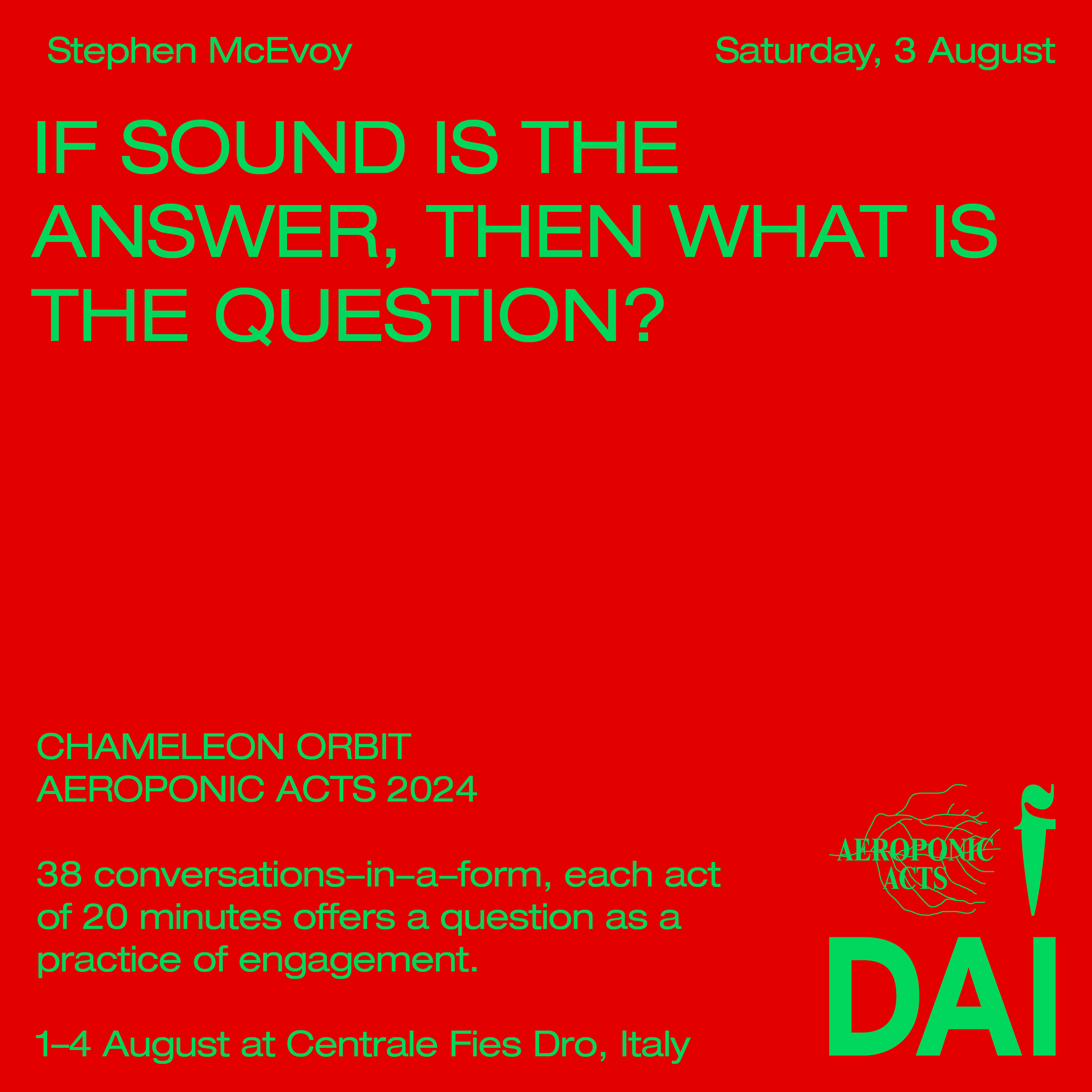Stephen McEvoy ~ Sonic Romanticism
A long-awaited return to orality. Imaginings of vibration and quantum entanglement. Ontologies that begin with the Big Bang and sigh tirelessly underneath the layer of language. If capital has alienated us from ourselves, each other, and nature, then what kind of fantasies make us feel like this state of affairs is not undoable? Sound holds the promise of such an exit, the story of the sonic antidote repeated again and again. What is it about sound that makes it the perfect escape vehicle?
AEROPONIC ACTS 2024 ~ Chameleon Orbit
About Stephen McEvoy


